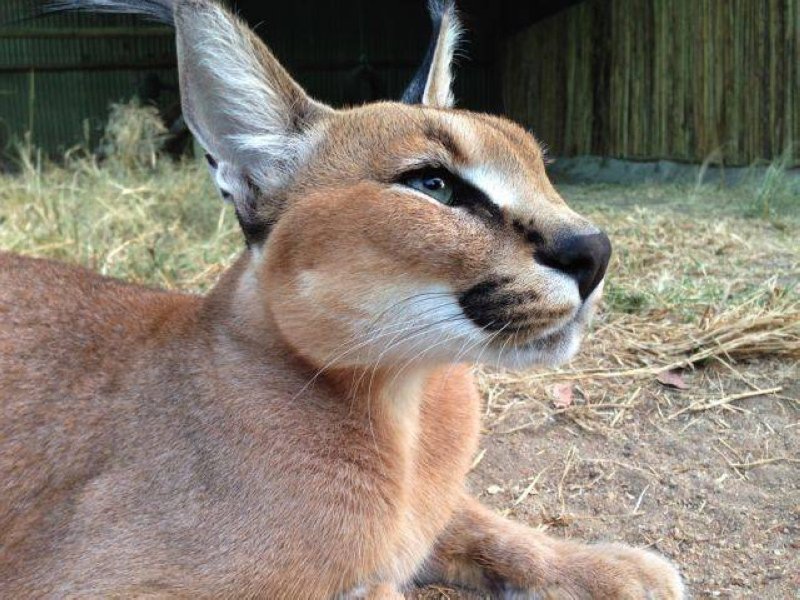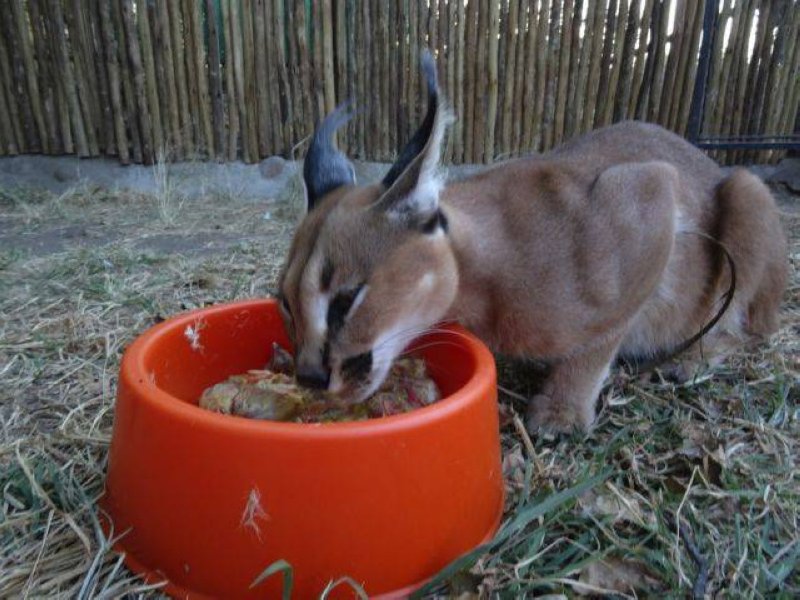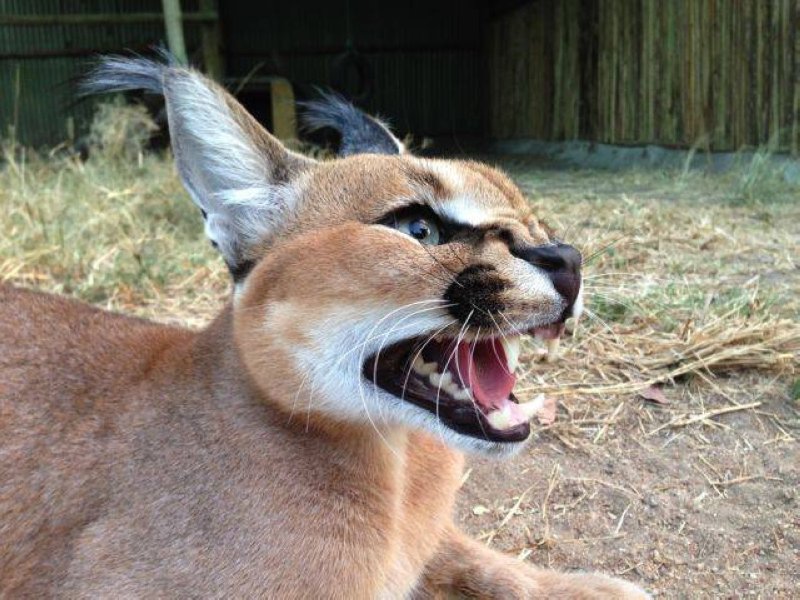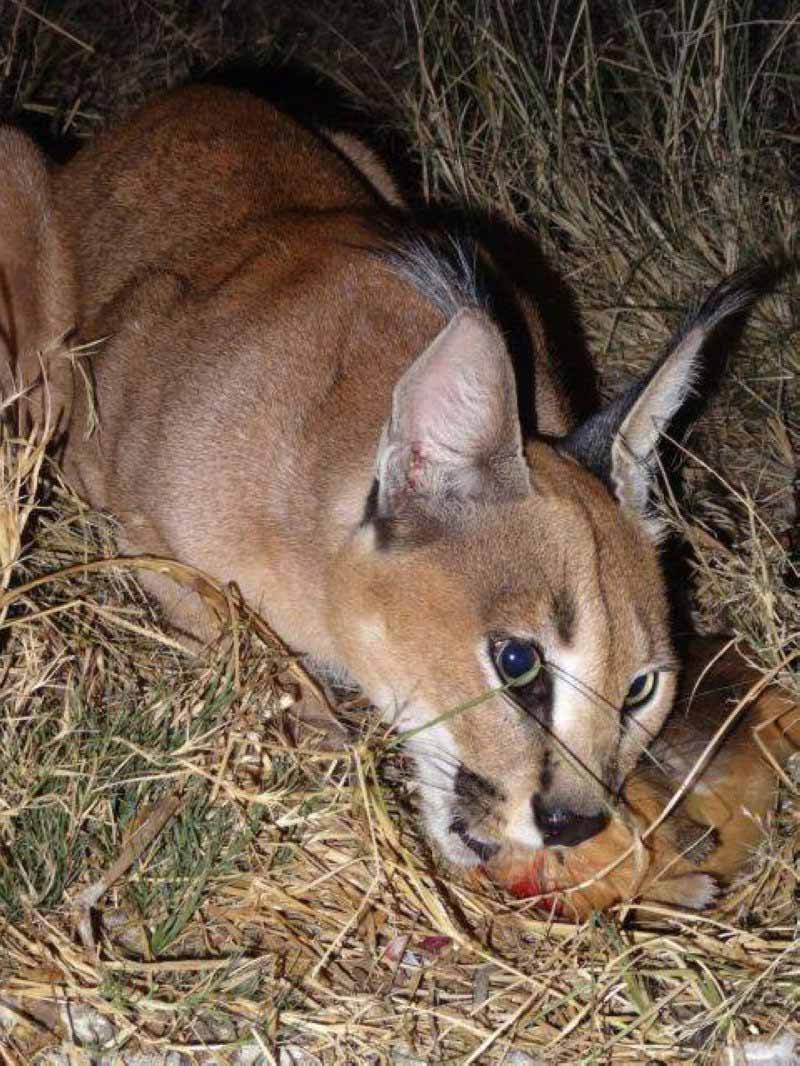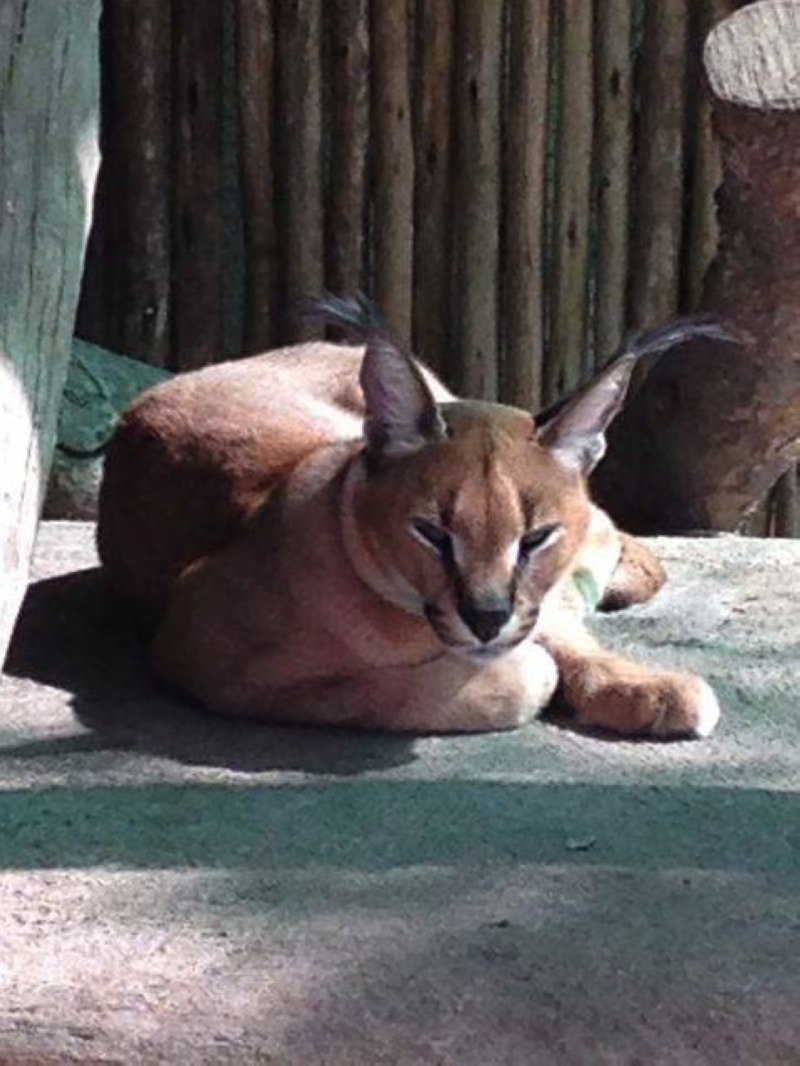Of all the African animals – caracals (also known as lynx) are not very popular in Africa. Whilst they are a beautiful and stunning animal, they are also excellent killers. And they kill for the fun of it, not just to eat their prey.
Farmers have reported a caracal killing over 100 sheep in a night, and only eating small parts of some of the sheep, mainly the rump where the best meat is.
Thus many are shot on sight with no sympathy for their diminishing numbers.
However some Africans rescue injured caracals and have tried to hand rear and tame them.
Success is very variable as these animals naturally have a wild instinct and a strong attitude. They will never behave as a domestic cat and are not recommended as pets.
Moholoholo Rehabilitation Centre
Lucius was a caracal and was one of our many charges whilst volunteering at Moholoholo Animal Rehabilitation Centre near Hoedspruit, in South Africa.
Lucius was a hand reared cat so we couldn’t understand why it was in a cage of its own at Moholoholo. It soon became obvious…
For a long time we thought Lucius was a ‘he’, but ‘he’ was in fact a ‘she’. It didn’t really matter as Lucius was rapidly re-named Lucifer, for good reason. Her previous carers did not mention her individual personality when we took over, for more good reason!
Getting to Know Lucius
As I soon learned, Lucius had a very defensive-fearful-aggressive personality. She had many faces.
At times butter wouldn’t melt in her mouth and she looked so angelic sunning herself in the golden African sun rays. But then, she would spin on a dime! Jekyll and Hyde summed Lucius up very well.
Whenever I was within a metre of her fenced enclosure, she would turn at me and growl and hiss fiercely, showing all her spectacular teeth very proudly.
A good day was when she only hissed once. Some days were a ‘three hiss day’. Grumpy girl!
No matter how much talking in a soothing voice to her, saying nice things like ‘beautiful girl, gorgeous pussy’, and so on, she would turn and hiss. Maybe she knew we weren’t serious.
I soon noticed that she particularly didn’t like females or maybe just me. When Tony walked past her cage he never got a single hiss. She was a tart of the first degree.
A Caracal’s Daily Diet
We fed her once a day. Her regular feed was 30 frozen, dead baby chicks – yes, pretty gross. Her water bowl needed changing regularly as did her cage need cleaning daily.
Poop was not allowed in view in any cages open to the public. ‘Nope, our animals never poop, they are very clean and polite…” Yeh right!
The desperate race to poop pick an enclosure before a herd of visitors went round was hilarious. Poop picking with purpose!
Braving A Vicious Caracal
Approaching the door into her enclosure was a frightening experience. She would often lie right next to the door preventing us from opening it.
If I tried to push it open, she would growl, hiss and spit at me – trifecta! Wearing only yoga leggings, her behaviour was quite intimidating.
I used to send Tony in first in front of me as he wore his thick denim, titanium laced, motorbike “Draggin Jeans”. His jeans were caracal proof, much better than my prissy Lululemon leggings.
But I learned that if challenged by forcing your way in (and that took BIG guts the first time!), she simply walked away and left you to do your business. Classic.
The ultimate control she had, until that point in time. I had her sassed from now on…
True to form, every time I bravely pushed my way into her enclosure, her demeanour changed and she behaved completely differently.
She was calm and quiet unless you challenged her 1 metre border of security and protection around her. Only then would she hiss spit and threaten you.
We were determined to try to calm her to our presence. However despite all our determination she never changed.
I would certainly never turn my back on her or go into her enclosure alone (that was a no-no anyway with any of the animal enclosures).
Enrichment For A Bored Caracal
I decided she was bored in her enclosure, all alone with no stimulation.
So I set about individually placing her 30 chickens all over her enclosure, up her tree, along the branches, in her sleeping quarters, on its roof etc.
She would have to earn her chickens, so “go seek and find” big scary pussy, get some exercise!
One day we had to feed her a live guinea pig, as an exercise to maintain her natural wild behaviour.
It was interesting to watch her with her prey as she was exactly like all the domestic cats I have reared in the last 20 years.
If the guinea pig made a noise or ran, she would pounce and play with it. If it ran into a corner and was still, she lost interest in seconds.
However when it came to the final moment of play time being over, dinner time was on. She did the deed very quickly and ate the whole animal including most of its fur in a matter of minutes.
After all, despite apparently having been hand reared, she was still a wild animal.
In the enclosure next to her were two servals. The intervening chicken wire fence had been covered by thin bamboo which had see-through slats.
Lucius hated the servals, and for some god forsaken reason, the servals had a death wish and would take every opportunity to try to get into her enclosure.
God knows what the spat would have been like if this ever happened. World War III would have nothing on the blood spilled…!
I believe something nasty happened to Lucius in her past to explain her severe defensive-aggressive behaviour despite her being hand reared. But she was a lesson in that ‘wild’ is never really ‘tame’, so do not ever be conned into thinking so. Give every wild animal the respect it deserves, no matter how ‘tame’ you think it acts…
Irene Isaacson travelled at her own expense.
Discover South Africa
More ideas on what to do in South Africa:
Go on safari at Hluhluwe-Imfolozi Park
If you’re after an animal experience in Australia, head to Currumbin zoo or find animals that live in the rainforest in the Daintree and visit Tasmania wildlife parks.
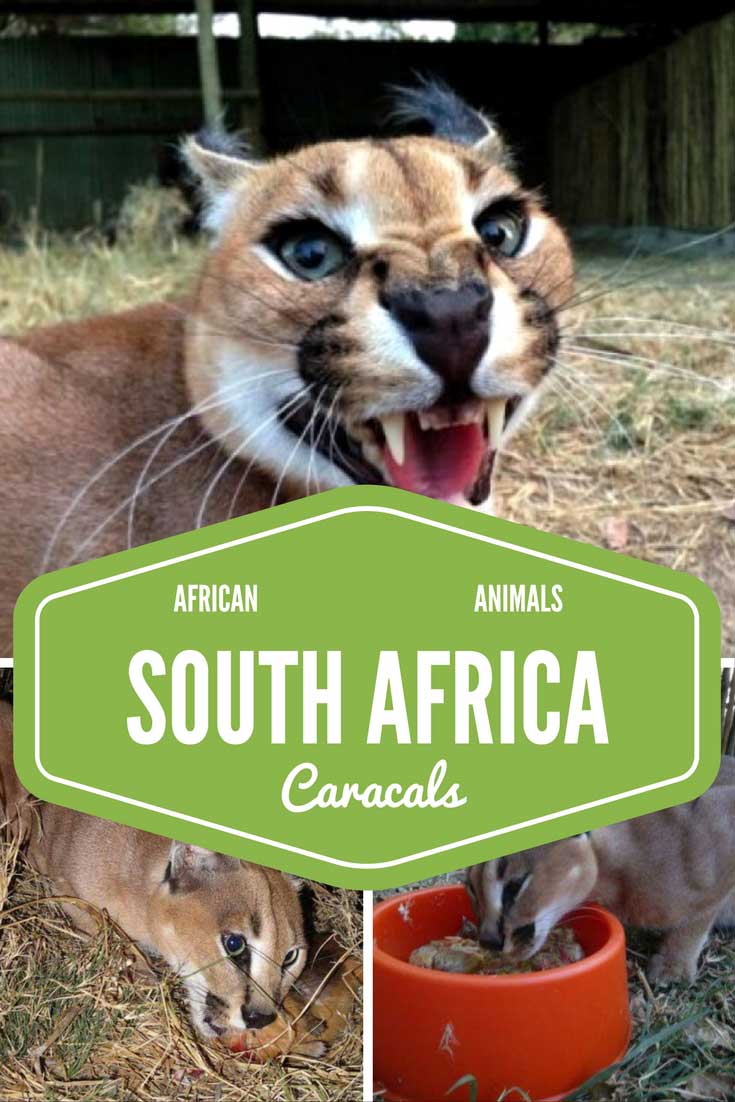
Plan Your Trip

Rent A Car – Find the best car rental rates at Discover Cars. They compare car hire companies to provide you with the best deal right now.

Find A Hotel – If you’re curious about this article and are looking for somewhere to stay, take a look at these amazing hotels.
